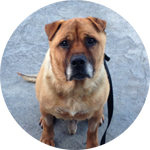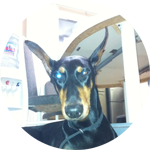Dogs tend to eat unusual things. When a dog ingests foreign material or foodstuffs too large to pass through the esophagus (food pipe), the esophagus can become blocked. Small-breed dogs, especially terriers, are most prone to having esophageal foreign bodies. Esophageal foreign bodies cause mechanical blockage, swelling, and death of the throat tissue. Obstruction of the esophagus occurs with objects that are of a size, shape, or texture that will cause them to get stuck in the esophagus.
Symptom
- Gagging
- Loss of energy
- Loss of appetite
- Excessive Drooling
- Vomiting
- Restlessness
- Trouble Swallowing
- Trouble Breathing
Diagnosis
You will need to give a thorough history of your dog’s health, symptoms, and possible incidents that might have led to this condition. You should describe anything you think your dog might have eaten that could have become lodged in its throat (e.g., toys, panties, golf balls). Your veterinarian will do a physical exam, with an X-ray of the esophagus and chest. Another diagnostic tool that is useful for imaging is an endoscopy, for seeing the interior of the esophagus. Standard tests will also include a blood profile and urinalysis.
CASE
NAME: COCO AGE: 4 YEARS BREED: YORKIE SEX: MALE NEUTERED
History
“Coco” was presented for anorexia, lethargic behavior, and refusal to walk.
Blood sample was taken and sent to lab for diagnostics. Blood results revealed an increase in white blood cells, indicating massive inflammation with normal organ function. Four days later “Coco” was presented for an open wound on his neck that the owner had noticed earlier that day. “Coco” was left in hospital care to undergo wound exploration and repair under anaesthesia.
Treatment
Surgical exploration and wound repair was done during surgery and a needle with thread was found and removed from the wound. Wound was then flushed and cleaned and a drain tube was placed to drain any extracellular fluid. Wound was then sutured and pet was placed on anti-inflammatory medication and antibiotics. Drain tube was removed 5 days later and sutures were subsequently removed.
Follow Up
Day 5: “Coco” was doing very well; drain tube was removed.
Day 14: “Coco” was doing great; sutures were removed and healing was complete.
Lesson Learned:
The importance of pet proofing our homes, to prevent our pets from swallowing foreign objects, like bones; and in this particular case “Needles”.







